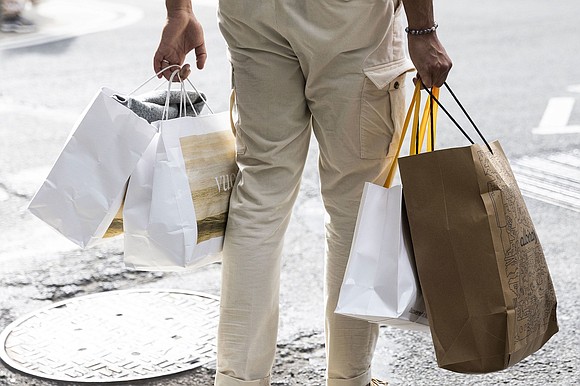US economic growth expanded much faster in the first quarter than previously estimated
CNN/Stylemagazine.com Newswire | 6/29/2023, 10:10 a.m.

Originally Published: 29 JUN 23 08:47 ET
Updated: 29 JUN 23 09:48 ET
By Bryan Mena, CNN
Washington, DC (CNN) — The US economy expanded at a much faster pace in the first three months of the year than previously estimated, the Commerce Department reported on Thursday.
Gross domestic product, the broadest measure of economic output, rose by an annualized rate of 2% in the first quarter, up from the second estimate of 1.3%. That was also well above economists’ expectations of 1.4% rate, according to Refinitiv.
The department’s final estimate of first-quarter GDP reflected an upward revision to exports, consumer spending, state and local government spending, and investment from housing businesses, such as landlords. The new data showed that Americans spent more on services and less on goods, including a jump in spending on health care services. Consumer spending accounts for about two-thirds of economic output and the latest estimate incorporated data from the Commerce Department’s Quarterly Services Survey.
The revised trade flows contributed positively to GDP, with exports rising more than previously estimated while imports were revised down. Residential fixed investment — spending from housing businesses or landlords — had less of a drag on GDP. Nonresidential businesses cut back more than previously reported, specifically more on equipment purchases.
The final first-quarter GDP estimate shows that the US economy was in much better shape than previously thought, thanks to resilient US consumers, though economists say that momentum has slowed in recent months.
“While consumers are still spending, they are exercising more discretion as lingering inflation and the Federal Reserve’s tightening cycle take their toll,” wrote Gregory Daco, chief economist at Ernst & Young, in an analyst note. “We still believe a recession is more likely than not, but we have lowered our recession odds to 55%, and if it were to materialize it would have unique characteristics.”
The Fed kept its key federal funds rate steady at a range of 5-5.25% earlier this month, though most officials expect to hike rates two more times this year to successfully tamp down any lingering inflationary pressures.
And that’s on the backdrop of banks toughening their lending standards, inflation still hovering above the Fed’s 2% target, student loan payments restarting later this year, and the labor market steadily cooling. Consumers are facing a challenging economic landscape in the future, but many economists, including Fed Chair Jerome Powell, have lauded the resilience of the US economy.
And consumers might spend a bit more as the still try to recoup lost time or secure purchases they previously weren’t able to.
“Consumers who still have discretionary dollars to put to use are still spending them either on on new autos, which weren’t available in the last two years because of the chip shortage, or spending them on services, the face-to-face economy where a lot of plans got derailed by the pandemic,” Bill Adams, chief economist at Comerica Bank, told CNN.



